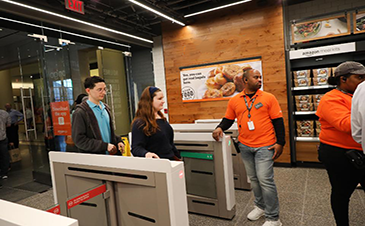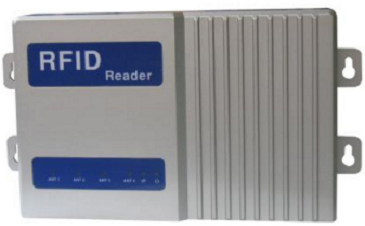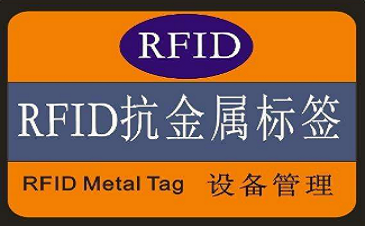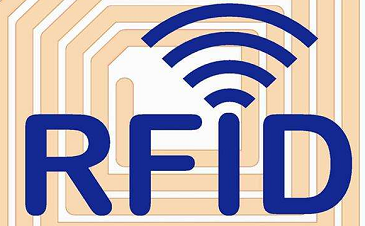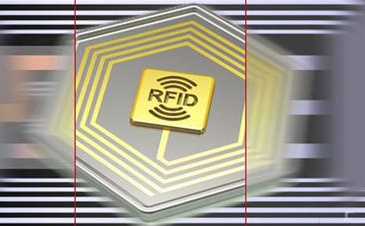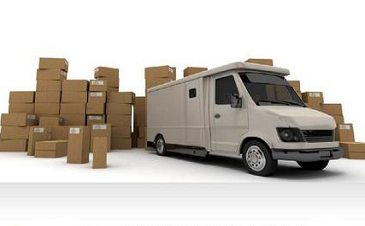If consumers can get what they need from the convenience store and leave without contacting the cashier, how cool is that?
Since 2015, Amazon has been trying this idea. It is now ready to open a retail store in Seattle, promising to provide convenient online shopping in the real world.
For a technology that most people are familiar with but not thinking about, this will be a huge win.
Go Grocery is a store created by Amazon for people in a hurry. This is a 10,400 square foot store with department stores, baked goods, agricultural products, beverages and easy-to-cook meals.
This is a small, centralized grocery store that consumers can find in the corner of city blocks. In addition to the Amazon brand, the uniqueness of this store also lies in the convenience of its new era.
Amazon is known for its customer service, which has helped this online retailer become one of the most trusted and loved brands in the United States.
Store managers understand that consumers do not want to understand the technology, they just want the problem to be solved. Consumers want convenience, and this is what they get in the Amazon store.
The customer enters Go Grocery, scans the QR code connected to their Amazon account, selects the required items, and then leaves. All payment details and product tracking are processed in the background through a cloud-based payment infrastructure and a large number of cameras.
Amazon said that self-driving cars use the same types of technology (including machine vision, sensor fusion, and deep learning), making it possible to realize the “Just Walk Out” shopping experience.
This way of shopping is too cool, but what if consumers do n’t shop on Amazon? Other retail business models are trying to use RFID to replicate this experience.
RFID tags have been in existence since they were invented by Harry Stockman in 1948. Today, from subway passes to livestock tracking, micro RFID tags are widely used.
RFID tags can be attached to product labels and stickers because of their small size. It is superior to simple bar codes because many RFID tags can be scanned at the same time. These tags are also very effective in inventory management systems.
Avery Dennison is known for manufacturing labels used in the consumer goods and packaging industries. Recently, the California-based company has actively expanded its RFID business.
In November last year, it acquired Smartrac, the world’s largest RFID tag inlay manufacturer. A month later, Avery Dennison broke ground on its new manufacturing plant in Brazil. Avery Dennison currently holds more than 1,000 RFID patents and fully utilizes its relationship with leading consumer brands.
In November 2019, Avery Dennison began a pilot project in collaboration with Ralph Lauren. According to a report published by Women’s Wear Daily, all labels printed on shirts, pants and other clothing will contain a electronic label. These tags provide a digital identity for clothing, which can track inventory and provide better after-sales service.
The advantages of RFID also make it suitable for convenience stores. Items can be marked and read in batches. This means retailers only need to scan once to know exactly how many items are on the shelves. This reduces the labor costs associated with inventory counting and repackaging.
Amazon wins online retail business through contactless shopping. And Avery Denison is manufacturing digital products to enable contactless shopping in the real world.
Unmanned supermarkets, the hot word of catching up with shared bicycles, has become a bright spot in front of everyone. Alibaba’s trader Jack Ma put forward the concept of new retail, believing that retail stores in the form of supermarkets and convenience stores can achieve “unmanned sales” without the help of cashiers. At this time, Auchan Supermarket laid the first unmanned convenience store, Bingo Box, Rosen, Alibaba, etc. Many companies announced that they began to join the “unmanned supermarket” project. In fact, in the Central Plains-Henan, the unmanned supermarket project is also quietly developing!
International giant Amazon’s acquisition of offline retail supermarkets (acquisition of U.S. Whole Foods Supermarket for US $ 13.7 billion) stimulated traditional supermarkets. At the end of 2016, it looted offline retail subdivision scenarios and released a super big move that has been held back for four years-the new Offline store Amazon Go. No need to wait in line at the physical store: Swipe your phone to enter the store, select products, get goods, and then leave!
Amazon’s unmanned supermarket is really eye-opening. If you don’t line up or check out, take it and leave. Amazon Go shopping is all in one go. The success of Amazon Go naturally moved giants such as Alibaba. Through cooperation with high-tech companies, major companies have gradually turned one of the new retail concepts of unmanned supermarkets into reality. The emergence of unmanned supermarkets and the use of RFID technology Inseparable.
Most of the products in unmanned supermarkets are labeled. Yes, this label is an “RFID” electronic label. It uses the omnidirectional label H47 label in the inlay series. The label uses the latest true 3D technology of impinj. The reading effect is not limited by the reader antenna, and can be well recognized in 360 degrees of space, which is a major innovation in the field of UHF RFID. Electronic tags combined with the reading and writing system in the automatic cash register help consumers complete payment.
As a wireless communication, RFID technology is very suitable for the concept of new retail, so it is understandable that RFID tags are the heroes behind unmanned supermarkets.
Combined with RFID-related technologies, unmanned supermarkets also combine electronic monitoring and other technologies to make a truly unmanned supermarket appear to people as perfect as possible. Perhaps, unmanned supermarkets will have some problems to be solved like shared bicycles, but a more convenient economic lifestyle has become a trend of the times.
RFID reader is an indispensable part of the application system. The correct selection of the RFID reader will be related to whether the customer project can be successfully implemented and the cost of implementation. It is best to pass a rigorous process to ensure the project success.
RFID readers can be divided into 125K, 13.56M, 900M, 2.4G and other frequency band readers according to the frequency.
125K: It is generally called LF. It is easy to use and low in price. It can be mainly used for livestock entry and exit management.
13.56M: Generally called HF, it has strong confidentiality and fast reading speed. The close-range 13.56mhz RFID has good confidentiality and long-distance 13.56mhz reading is stable and fast. Mainly used in home and school communication, personnel attendance management, entrance and exit management, book and file anti-theft management, and government conference sign-in.
900M: Generally called UHF, with long communication distance and good anti-collision performance, it is generally used as parking lot and logistics.
2.4G: Microwave section RFID card reader, strong penetration.
5.8G: Microwave section RFID card reader, used in highway ETC electronic toll collection system.
Advantage
First, you need to pay attention to the frequency range of the reader device to see if it meets the frequency specifications of the project site;
Second, understand whether the maximum transmission power of the reader and the matching antenna selection exceed the radiation standard;
Third, look at the number of antenna ports that the reader has, depending on whether the application requires a multi-interface reader;
Fourth, whether the communication interface meets the needs of the project;
Fifth, the reading distance and anti-collision indicators are read. The reading distance indicators should be clear about what antennas and tags are tested; anti-collision should be clear about what tags are in which arrangement and how long they have been read;
Sixth, an RFID application system is not only related to readers, but also related to tags, antennas, materials of labeled items, movement speed of labeled items, surrounding environment, etc. It is best to simulate the scene before determining the equipment. Testing and verification to ensure that the product truly meets the application requirements;
Seventh, continuously test the stability of the equipment under simulated conditions to ensure stable operation for a long time;
Eighth, to see whether the development materials meet the system development requirements, it is best to support the system you are using, and it is best to have related routines. If it is not supported, the development time will be very long, or even the development will not continue.
In recent years, in China, the Internet of Things technology as a strategic new industry has been elevated to the top of national development, and the Internet of Things technology industry chain continues to develop. The definition and development strategy of countries all over the world continue to make it clear that the cross-border marketing of information technology and traditional manufacturing has become a general trend, all of which are inclined to the key of intelligent manufacturing. Intelligent manufacturing must collect data information of mechanical equipment, and then carry out and analyze the data information for the next step. However, in the extreme application fields such as metal, general RFID tags cannot be applied, and the data collection work encounters quite a challenge. RFID flexible anti-metal tags have emerged from time to time. It is encapsulated into electronic tags with a unique anti-magnetic absorption material, which not only technically solves the difficulty that ordinary electronic tags cannot be applied to metal surface layers, but also like ordinary The label is also attached to the inclined surface and shoulders the main responsibility of collecting data in extreme natural environments such as metal.
RFID anti-metal tags can work in high-temperature environments with stable characteristics, and are very suitable for the IT assets of RFID metal tags, such as desktop computer hosts, network switches, server chassis, aluminum plates and storage shelf identification.
The general application scenarios are as follows:
1. Warehouse logistics investment management;
2. Equipment maintenance in the room;
3. Investment management;
4. Metal sheet management method;
5. Medical machinery management methods.
Why do everyone use RFID anti-metal tags, because they not only have heat resistance, stable characteristics and other characteristics, but also have the following 7 advantages, in order to complete the reasonable management method of objects in the natural metal environment, RFID anti-metal tags are very good Pick. RFID anti-metal tags basically add a kind of anti-metal raw materials in the original, this kind of raw materials can avoid the invalid state of the adhesion between the label and the metal block. The tags of such raw materials are called RFID anti-metal tags. The metal-resistant raw material is a unique electronic tag encapsulated with a magnetic wave-absorbing material, which technically solves the difficulty that the electronic tag cannot be applied to the metal surface. The product can be protected from moisture, acid and alkali, alkali and impact, and can be used outdoors.
1. Customers can customize the reading and writing ability of RFID anti-metal electronic tag standard data information, making the professional software system more efficient and more convenient.
2. RFID anti-metal tags are suitable for frequency-hopping work mode, with strong anti-interference.
3. The reasonable identification distance of RFID anti-metal tags is above 8 meters (related to readers and wireless antennas)
4. The RFID anti-metal electronic tag uses the ultra-high working mid-frequency design scheme, which not only meets the requirements of the relevant manufacturing industry, but also can carry out flexible development, design and application.
5. Can additionally read and write several RFID anti-metal tags (up to 50 per second), without being limited and harmed by the total number of tags in the working area.
6. The storage area is for customers to carry out the actual operations of data encryption reading, writing, erasing and rewriting, and also to develop a permanent special type area dedicated to specific customers.
7. RFID anti-metal electronic tags do not need rechargeable batteries, and the running memory can be continuously erased more than 10,000 times, the reasonable use period is more than ten years, and the cost performance is higher.
Intelligent manufacturing is the key to the industrial Internet, and flexible anti-metal tags are the key link of intelligent manufacturing. At the technical level, the technical development trend of flexible anti-metal tags has already made considerable progress after many years of development, and the key technical level has a broader scope. It solves the difficulty that the electronic label cannot be adhered to the metal surface application, allowing RFID to be more technically interactive with metal objects.
As a new modern security management system, the access control system integrates automatic identification technology and computer control information management measures, and involves many technologies such as electronics, machinery, optics, computer technology, communication technology, and biotechnology. With the development of automatic identification technology, UHF RFID access control management system has become the main component of security system, widely used in industrial automation, commercial automation, transportation control management and many other fields. The access control system based on radio frequency identification technology is the development direction of the future access control system construction.
The personnel access control and attendance management system integrates UHF RFID technology, image recognition technology, network technology, video acquisition technology and other technologies into one, to achieve enterprise employee access control, attendance integration, and digital management. This system has a photo intelligent comparison function. The system captures and stores the image of the system when the staff swipes the card through the image acquisition device and compares it with the system database photo. Successfully eliminating the phenomenon of employee swiping the card provides the most reliable data support for the enterprise to perform reasonable attendance management, and maximizes the company’s access security supervision Intensity.
UHF RFID access control management system consists of access control machine (integrated reader, controller), identification card, computer and electromagnetic lock. Generally, there are two types of access control systems. One is that when employees pass the access control system, they simply point the card (UHF RFID electronic tag) they wear on the infrared rays of the access control machine, and the door will automatically open. The other is the UHF RFID UHF long-distance access control management system. Through the installation of UHF readers and the UHF electronic tags worn by employees, the door can be opened and closed, and the identity can be identified during the entire passage. The reading of the card is completely intelligent and automatic, without the need for workers to operate, saving time. The cost of the second UHF RFID access control management system is relatively high. The choice of these two types depends on the specific needs of the enterprise.
Some Gen 2 RFID tags contain a 96-bit EPC capacity, which can just fit an electronic product code as the unique identifier of the product, and other information must be placed in an external database associated with the EPC. Other tags are 96-bit, 128-bit and 256-bit, so the data can be stored directly in the tag.
For example, the label affixed to the perishable cargo bag can write the shelf life and batch number of the product; the label affixed to the shipping container can write the mailing address of the consignee; the label affixed to the aircraft parts or the pipeline valve Compile the maintenance record, and the record can be written into the label’s user memory for each inspection.
As long as user memory is established, you can effectively read and write tag data, but this is not easy, so it is very important to find an experienced software supplier or system integrator, they need to have the ability to solve the following problems.
There is a 16-bit program block stored in the user, you need to decide which data is stored in which block, and then you have to configure the software that controls the reader-whether it is intermediate software or an application installed in the reader , So that it can decide which data to access according to the program. The “layout” data is very important in user memory, because the arrangement will affect the performance. The reader needs to send commands to the tag to access the user’s memory, which is time-consuming and slows down the reading speed.
Due to limited user memory space, compressed data is also necessary. The general ISO 15962 standard provides several compression methods, but each has to be discarded-among them, space and performance can only choose one. If an application needs to read all the data at the same time, you can compress the data together. Although this can reduce the space required for storage, the more data you read at the same time, the slower the read speed. If a program only needs to read a small amount of data at a time, it is best to compress these data in different user memories, so that the reader needs to send fewer commands and run faster, but the overall space used is also more many.
In a closed-loop program, you can use a special format to write data into user memory, but if you need to share data with business partners, you need to use a standard designed specifically for supply chain programs: GS1 application identifier ( For consumer supply chain), ANSI data identifier (for manufacturing), Text element identifier (for aerospace). Each standard provides many common descriptive data elements, such as shelf life, batch number, size, and weight, and also specifies the standard coding to identify each data element in user memory.
With the popularity of the Internet of Things (IoT), more and more wireless connected devices have entered the market. Although the power cord is no longer needed, the battery life is still a great challenge for a large number of smart devices on the market today. According to relevant market research data, it is estimated that by 2023, there will be more than 35 billion connected IoT devices worldwide. We can imagine that even if only a small part of the equipment needs to be replaced, the number is very huge. This will be an endless job, similar to painting the Golden Gate Bridge. When the painter paints from one end to the other, the other end needs to be repainted.
Therefore, the labor cost of maintaining battery-powered equipment is also very high. In order to solve the power supply problem of these devices, the best way is to use low-power connection solutions for design. These solutions require the use of widely deployed wireless technologies, such as Bluetooth? Technology. Bluetooth technology is an ideal wireless platform for low data rates and remote applications. This is a feature common to most IoT solutions. A large number of IoT applications actually need to transmit a very small amount of data, but their application range is very wide. Usually Need to be deployed in a relatively remote location. As engineers continue to make unremitting efforts for low-power connection solutions, more and more IoT devices and applications will obtain longer battery life and can even run without batteries. Using Bluetooth technology, combined with advanced technologies such as on-demand wake-up and the lowest power consumption radio, can reduce the power consumption of ordinary IoT devices by 10 to 100 times.
So, what does this mean for the future of battery-powered Bluetooth devices?
The Bluetooth 5.0 wireless communication standard, coupled with ultra-low power consumption, makes the Internet of Things devices consume very little energy. The new connection solution requires very little power, which makes it possible for IoT devices to automatically collect energy from the surrounding environment. For example, radio frequency (RF), light, motion, and heat can collect the required energy for the device. Used.
Bluetooth-powered devices can do this while still providing Wi-Fi equivalent coverage. This means that for many IoT applications, the power consumption may be much lower than the energy that can be collected by the device, which will make the concepts of “sustainable battery” and “battery-free” IoT become a reality, and will definitely appear. In the entire life cycle of the application of the solution, no power cable is required to operate only with the battery or even the battery, so that these devices have a “permanent battery” life. At the same time, the rise of 5G will also increase the market demand for Bluetooth devices, such as beacons, asset tracking, sensing, tags, and positioning. We will see a growing demand for “battery-free” Bluetooth devices in many industries, including smart homes, Industry 4.0, smart cities, healthcare, and retail.
For large-scale IoT deployments, Bluetooth and 5G will play a key role in connecting systems. For example, sensor networks in a factory can use Bluetooth Mesh technology to communicate with each other. The Bluetooth connection function is ideal for devices that require moderate levels, operate with low power consumption, and extend battery life. These devices can be connected to the gateway point connected with 5G, so that the gateway can use the ultra-fast speed of 5G to send information to a longer distance cloud or server.
Consumer applications such as remote control, home automation devices, wearable devices, personal tracking devices, keyboards, etc. alleviate the pain of consumers frequently changing batteries due to power consumption issues. Industrial and enterprise applications such as asset tracking, indoor positioning, beacons, industrial automation sensors, tire pressure monitors, and electronic shelf labels also reduce the overall operating costs of enterprises by reducing battery maintenance costs. In critical applications such as industrial sensors or medical applications, the reliability of the solution is critical, as the longer battery life greatly reduces the risk of equipment failure.
The advancement of low-power functions and energy harvesting technology is very meaningful, it can significantly improve the battery life of IoT devices. With the latest Bluetooth 5.0 technology, these devices can even have a “permanent battery” life or no battery at all, thus opening up more new possibilities for the Internet of Things.
As Bluetooth technology continues to evolve from the latest Bluetooth 5.0 standard to 5.1 and 5.2, we will see endless possibilities. Low-power technologies have created more imagination for more sustainable smart devices and IoT ecosystems. In the future, these ecosystems are no longer limited to batteries and are more cost-effective.
Because ordinary RFID tags are prone to problems such as falling off or failure of RFID tags in low temperature scenarios. Therefore, RFID management in many low temperature scenarios requires low temperature resistant RFID tags. Let’s understand together!
Food and Drug Cold Chain Management
Cold chain RFID warehouse management system can realize the standardization and standardization of warehouse management and operation of cold chain enterprises, improve the management quality and customer service level, reduce the overall cost of the supply chain, improve the efficiency of resource use, and bring higher economic benefits.
Through RFID management, you can achieve intelligent outbound storage management of cold chain warehouses; intelligent warehouse selection board management; intelligent analysis reports; intelligent traceability management, etc.
Full vaccine management
The occurrence of false vaccines, expired vaccines and ineffective vaccines has frequently occurred, causing serious impact on the parties and the society. The use of low-temperature resistant RFID tags can realize the anti-counterfeiting traceability management of vaccines, the shelf life of vaccines, and batch management.
The use of RFID tags with temperature sensing can also realize the management of temperature records during vaccine logistics and storage, thereby preventing the problem of vaccine failure caused by substandard storage temperatures.
Virus Security Management
Viruses are a kind of parasites in living cells that are smaller than bacteria, have no cell structure, and contain only one type of nucleic acid. Once infected, it can cause viral harm. In virus research, the importance of good virus management is self-evident.
Virus samples are usually stored in a low-temperature environment. The use of low-temperature-resistant RFID tags can achieve rapid inventory, rapid identification and search, and anti-loss management in virus management.
Blood Life Cycle Management
The use of RFID technology in blood management can well solve the blood collection, transportation, deployment and management, and lay the foundation for industry networking management. The storage temperature of fresh frozen plasma is below -20 ° C, which requires corresponding RFID tags that can withstand low temperatures on the basis of meeting medical non-toxicity.
Radio frequency tags are attached to the blood bags, and key data and operator information are recorded in the blood collection, inspection, storage, and blood use tags. The condition of each bag of blood can be monitored throughout the process, effectively ensuring blood quality, and information can be used. Retrospective.
Reproductive cold chain management
RFID technology is widely used in sperm banks, egg banks, and reproductive centers. Use RFID technology to track, record and create a comprehensive record of eggs, sperm and embryos during fertility treatment for each patient.
Using RFID technology to automatically pair the right patients can help reduce the risk of sample mixing or inappropriate handling. Use RFID tags to track samples to ensure eggs, sperm, and embryos match correctly.
Specially designed RFID readers ensure that doctors can only process one sample at a time. If incompatible RFID-tagged samples touch each other, the system triggers an alarm and stops subsequent procedures. The reader also ensures that samples are stored at the right temperature.
Laboratory sample management
RFID technology has many applications in laboratory management, such as the management of reagents, test tubes, instruments, equipment and other assets, as well as the management of laboratory samples. In the RFID management of laboratory samples, because some samples need to be stored and processed in a low temperature environment, this requires that the corresponding RFID tags can withstand the corresponding low temperature environment.
Medical test sample management
In the medical field, it is often the case that after the samples are scattered and collected, they are transferred to the relevant qualified medical inspection institutions for testing. In the handover process of relevant departments, the handover samples need to be counted, including the quantity, and the information corresponding to the relevant samples. Here, the disadvantages of the traditional bar code management are obvious, the inventory speed is slow, the efficiency is low, error-prone, and the long inventory time is not good for the preservation of samples.
Combined with RFID technology, low temperature resistant test tube electronic tags can realize fast inventory of sample transfer process and improve efficiency; shorten the inventory and transfer time to ensure the quality of transfer samples; reduce errors in the transfer process.
With the increasing number of materials in warehouse management, the requirements for inbound and outbound storage management have become stricter. The asset tray RFID management system uses RFID electronic tags for information binding, to achieve the positioning, search, inventory and access management of asset trays, and quickly improve the management efficiency. Realize comprehensive and real-time supervision of warehouse goods, and RFID technology realizes warehouse automation, informationization, and digital management.
RFID is an advanced wireless technology. RFID can allow many management methods to be implemented wirelessly, and more business enterprises will gradually implement the work of coding to bar projects. In order to improve the efficiency of operations, it is also necessary to not change the current. The logistics and warehousing mode will use pallets as a carrier, and the use of pallet identification can make storage management more convenient.
The RFID warehouse management system is to introduce RFID technology into the existing warehouse management, to automatically collect data from various operations such as warehouse arrival inspection, warehouse entry, warehouse exit, transfer, warehouse shift, inventory check, etc., to ensure that The speed and accuracy of data input in all aspects of warehouse management ensure that enterprises can accurately grasp the real data of the inventory in a timely and accurate manner, and reasonably maintain and control the enterprise inventory.
Warehouse management operations are also becoming more complex and diversified. The previous manual warehouse operation mode and data collection methods caused high labor and time costs. Intelligent warehouse management is the use of RFID technology in the existing warehouse management. The warehouse’s inbound, outbound, moving, inventory counting and other operational links of data for automated data collection, efficient warehouse management data input speed And accuracy to ensure that the company accurately grasps the real data of the inventory in a timely and accurate manner, and reasonably maintains and controls the inventory of the enterprise.
RFID technology is widely used in the fields of production, logistics and warehousing. With the rapid development of warehousing automation, equipment related to various industries is also continuously developing in a more scientific and practical direction. RFID technology plays a very important role in efficient storage pallet management. From warehouse to goods inspection, inbound, outbound, transfer, warehouse shift, inventory count to various operations, data is automatically collected, allowing the warehouse to Manage all aspects of data to ensure efficiency and accuracy.
In the WMS system, combined with the automatic data collection of RFID technology, you can quickly understand the statistics of the location and the pallet through the RFID electronic tag identification. RFID technology will change the field of the supply chain to recognize long distances, accuracy and speed, not easy to damage, large capacity, and many other advantages, simplify complicated workflows, and effectively improve the efficiency and transparency of the supply chain. RFID lays the foundation for the informatization and modernization of enterprise logistics management, improves the level and management efficiency of enterprise logistics management, and reduces enterprise management costs.
Shenzhen Smartway Technology Co.,LTD is formally resumed work and production, welcome any customer about RFID, IBUTTON to consult and place an order

